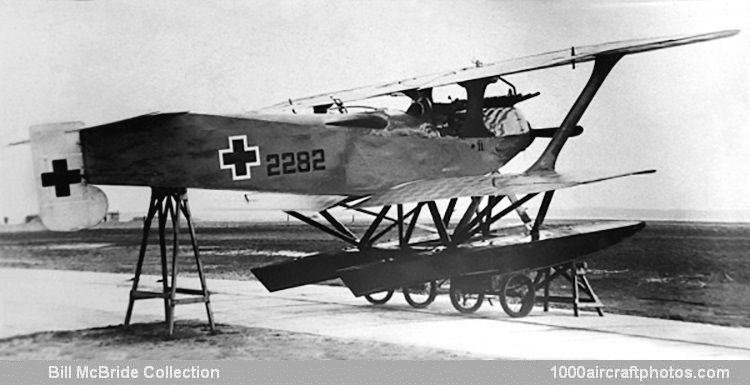12/29/2014. Remarks by Johan Visschedijk: "Early in 1918, it was suggested to Ernst Heinkel, chief designer of the Hansa- and Brandenburgische Flugzeug-Werke, that a successor to the W 12 two-seat fighter would soon be required if the German Navy was to maintain its superiority over Allied types being encountered over the North Sea.
To conserve valuable time, Heinkel installed the new 195 hp Benz Bz IIIbo eight-cylinder V-engine in a modified W 12 airframe and a 160 hp Mercedes D IIIa in a second W 12. Wing span and gap were reduced, stagger was increased to improve visibility, and airfoil-section I-type interplane struts were adopted. Armament comprised two synchronized 0.312 in (7.92 mm) LMG 08/15 machine guns and a 0.312 in (7.92 mm) Parabellum on a flexible mount in the rear cockpit.
The Benz-engined prototype received the designation W 27 while that powered by the Mercedes engine became the W 32, but both were found inferior to the W 29 monoplane and no further development was undertaken."
